Experimental Study on Damage Monitoring of FRP Plate Using FBG Sensors
Abstract
1. Introduction
2. Sensing Principle of FBG
3. Damage Monitoring Test of FRP Plate Under Impulse Load
3.1. FBG Layout and Test Equipment
3.2. Damage Analysis Under Dynamic Load
3.3. Data Analysis and Processing Under Pulse Load
3.4. Data Analysis and Processing Under Continuous Sinusoidal Vibration Load
4. Conclusions
Author Contributions
Funding
Data Availability Statement
Acknowledgments
Conflicts of Interest
References
- Bilotta, A.; Compagnone, A.; Esposito, L.; Nigro, E. Structural behavior of FRP reinforced concrete slabs in fire. Eng. Struct. 2020, 221, 111058. [Google Scholar] [CrossRef]
- Kharghani, N.; Soares, C.G. Experimental and numerical study of hybrid steel-FRP balcony overhang of ships under shear and bending. Mar. Struct. 2018, 60, 15–33. [Google Scholar] [CrossRef]
- Sun, Z.; Zheng, Y.; Sun, Y.; Shao, X.; Wu, G. Deformation ability of precast concrete columns reinforced with steel-FRP composite bars (SFCBs) based on the DIC method. J. Build. Eng. 2023, 68, 106083. [Google Scholar] [CrossRef]
- Liu, C.; Wang, X.; Chang, X.; Wu, Z.; Huang, H.; Noori, M.; Altabey, W.A. Innovative design and sensing performance of a novel large-strain sensor for prestressed FRP plates. Dev. Built Environ. 2024, 20, 100567. [Google Scholar] [CrossRef]
- Kozioł, M.; Toroń, B.; Szperlich, P.; Jesionek, M. Fabrication of a piezoelectric strain sensor based on SbSI nanowires as a structural element of a FRP laminate. Compos. Part B Eng. 2019, 157, 58–65. [Google Scholar] [CrossRef]
- Su, Y.; Xu, L.; Zhou, P.; Yang, J.; Wang, K.; Zhou, L.-M.; Su, Z. In situ cure monitoring and In-service impact localization of FRPs using Pre-implanted nanocomposite sensors. Compos. Part A Appl. Sci. Manuf. 2022, 154, 106799. [Google Scholar] [CrossRef]
- Armonico, A.; Ferrier, E.; Michel, L. Smart monitoring of RC T beams strengthened by external bonded FRP. Procedia Struct. Integr. 2024, 64, 604–611. [Google Scholar] [CrossRef]
- Zhang, Z.; Zhou, Z.; He, J. Development of FBG-based road ice thickness monitoring sensor and its application on the traffic road. Opt. Fiber Technol. 2025, 89, 104070. [Google Scholar] [CrossRef]
- Xue, Y.; He, J.; Zhang, D.; Liu, W. Development of OF based Intelligent Geotextile and Its Case Study in High-speed Railway Subgrade. Measurement 2023, 214, 112820. [Google Scholar] [CrossRef]
- Wang, Q.; Zhao, K.; Badar, M.; Yi, X.; Lu, P.; Buric, M.; Mao, Z.-H.; Chen, K.P. Improving OFDR distributed fiber sensing by fibers with enhanced Rayleigh backscattering and image processing. IEEE Sens. J. 2022, 22, 18471–18478. [Google Scholar] [CrossRef]
- Zhao, J.; Dong, W.; Hinds, T.; Li, Y.; Splain, Z.; Zhong, S.; Wang, Q.; Bajaj, N.; To, A.; Ahmed, M.; et al. Embedded fiber Bragg grating (FBG) sensors fabricated by ultrasonic additive manufacturing for high-frequency dynamic strain measurements. IEEE Sens. J. 2023, 24, 2853–2862. [Google Scholar] [CrossRef]
- Huang, M.; Zhou, Z.; Huang, Y.; Ou, J. A distributed self-sensing FRP anchor rod with built-in optical fiber sensor. Measurement 2013, 46, 1363–1370. [Google Scholar] [CrossRef]
- Chen, C.; Zhang, C.; Ma, J.; He, S.-Z.; Chen, J.; Sun, L.; Wang, H.-P. FBG Sensing Data Motivated Dynamic Feature Assessment of the Complicated CFRP Antenna Beam under Various Vibration Modes. Buildings 2024, 14, 2249. [Google Scholar] [CrossRef]
- Shi, J.; Kong, D.; Li, C.; Guo, R.; Xian, G.; Liu, H.; Tan, X. Strain and damage monitoring of optical fiber sensor-embedded carbon fiber reinforced polymer confined cracked pipes. Polym. Compos. 2025, 46, 5419–5438. [Google Scholar] [CrossRef]
- Zhou, Z.; He, J.; Yan, K.; Ou, J. Fiber-Reinforced polymer-packaged optical fiber sensors based on Brillouin optical time-domain analysis. Opt. Eng. 2008, 47, 014401. [Google Scholar] [CrossRef]
- Wang, H.; Dai, J.-G. Strain transfer analysis of fiber Bragg grating sensor assembled composite structures subjected to thermal loading. Compos. Part B Eng. 2019, 162, 303–313. [Google Scholar] [CrossRef]
- Wang, H.; Jiang, L.; Xiang, P. Improving the durability of the optical fiber sensor based on strain transfer analysis. Opt. Fiber Technol. 2018, 42, 97–104. [Google Scholar] [CrossRef]
- Lau, K.-T.; Yuan, L.; Zhou, L.-M.; Wu, J.; Woo, C.-H. Strain monitoring in FRP laminates and concrete beams using FBG sensors. Compos. Struct. 2001, 51, 9–20. [Google Scholar] [CrossRef]
- Liu, T.; Fu, Y.; Li, K.; Zhou, A.; Qin, R.; Zou, D. Experimental investigation and theoretical analysis of long-term performance for optical fiber Bragg grating-fiber reinforced composite in alkaline concrete environment. Case Stud. Constr. Mater. 2025, 22, e04130. [Google Scholar] [CrossRef]
- Siwowski, T.; Rajchel, M.; Howiacki, T.; Sieńko, R.; Bednarski, Ł. Distributed fibre optic sensors in FRP composite bridge monitoring: Validation through proof load tests. Eng. Struct. 2021, 246, 113057. [Google Scholar] [CrossRef]
- Anastasopoulos, D.; Reynders, E.P.; François, S.; De Roeck, G.; Van Lysebetten, G.; Van Itterbeeck, P.; Huybrechts, N. Vibration-based monitoring of an FRP footbridge with embedded fiber-Bragg gratings: Influence of temperature vs. damage. Compos. Struct. 2022, 287, 115295. [Google Scholar] [CrossRef]
- Kocaman, E.S.; Akay, E.; Yilmaz, C.; Turkmen, H.S.; Misirlioglu, I.B.; Suleman, A.; Yildiz, M. Monitoring the damage state of fiber reinforced composites using an FBG network for failure prediction. Materials 2017, 10, 32. [Google Scholar] [CrossRef] [PubMed]
- Yashiro, S.; Takeda, N.; Okabe, T.; Sekine, H. A new approach to predicting multiple damage states in composite laminates with embedded FBG sensors. Compos. Sci. Technol. 2005, 65, 659–667. [Google Scholar] [CrossRef]
- Li, R.; Tan, Y.; Chen, Y.; Hong, L.; Zhou, Z. Investigation of sensitivity enhancing and temperature compensation for fiber Bragg grating (FBG)-based strain sensor. OFT 2019, 48, 199–206. [Google Scholar] [CrossRef]
- Hill, K.O.; Malo, B.; Bilodeau, F.; Johnson, D.C.; Albert, J. Bragg grating fabricated in monomode photosensitive optical fiber by UV exposure through a phase mask. Appl. Phys. Lett. 1993, 62, 1035–1037. [Google Scholar] [CrossRef]
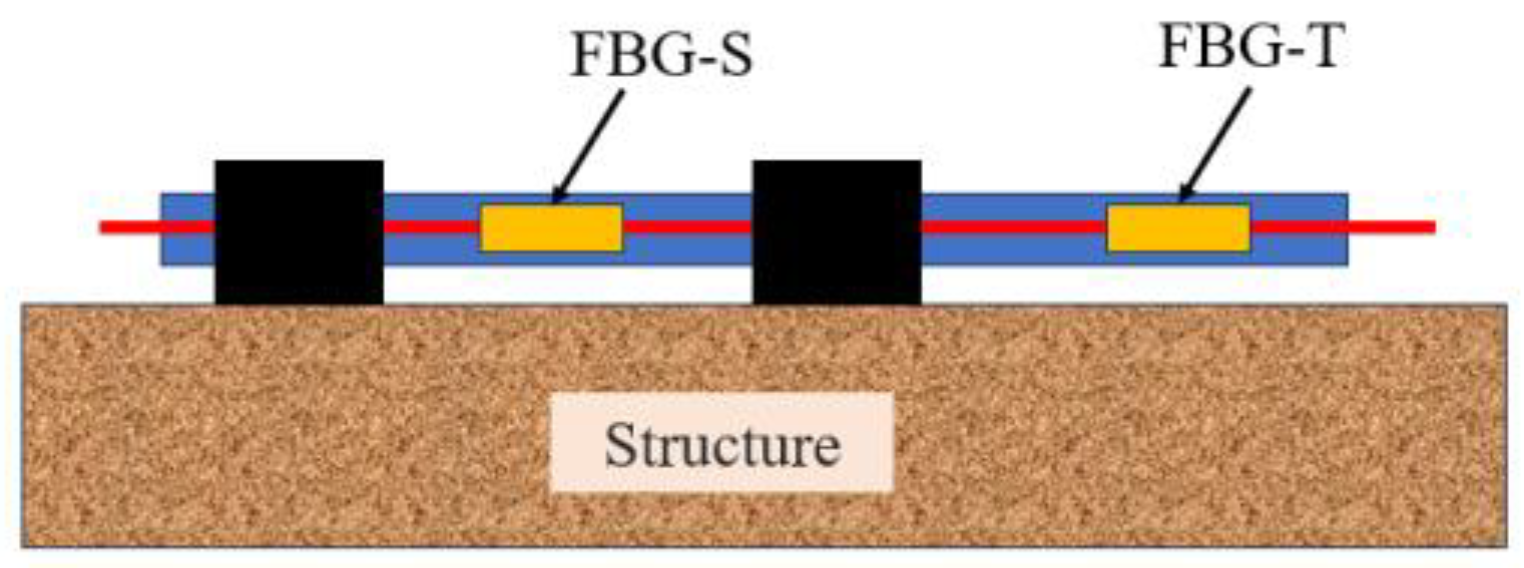
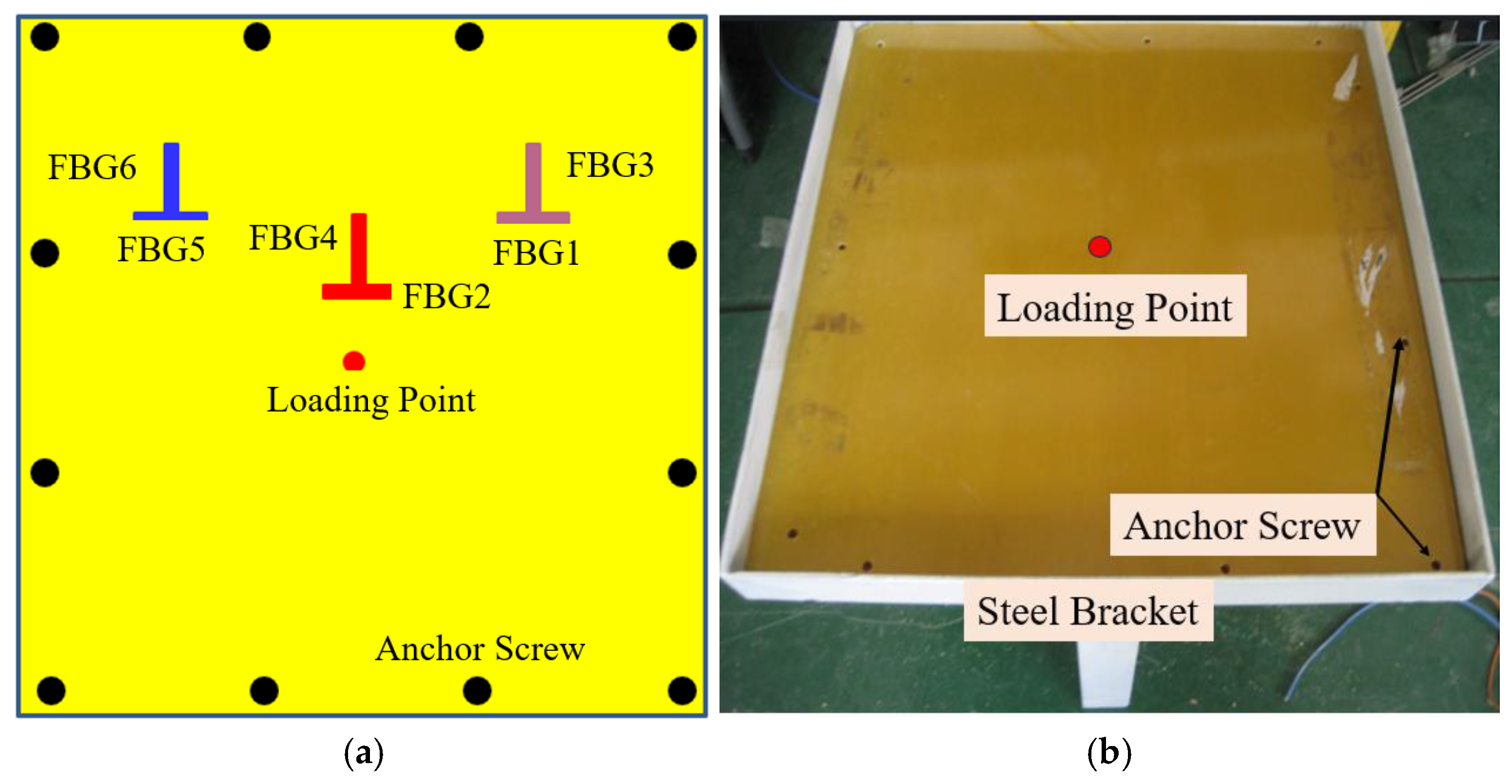

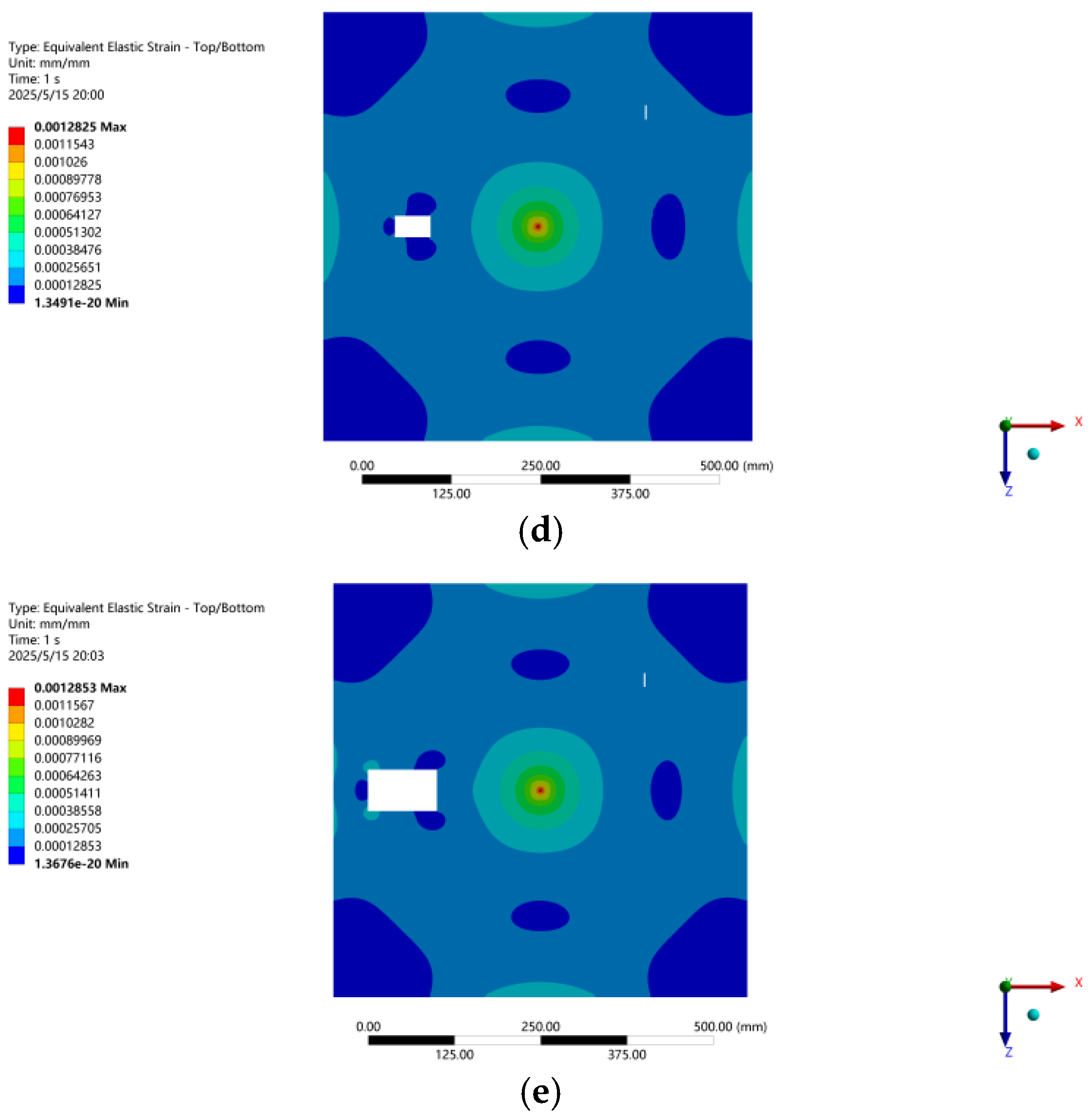

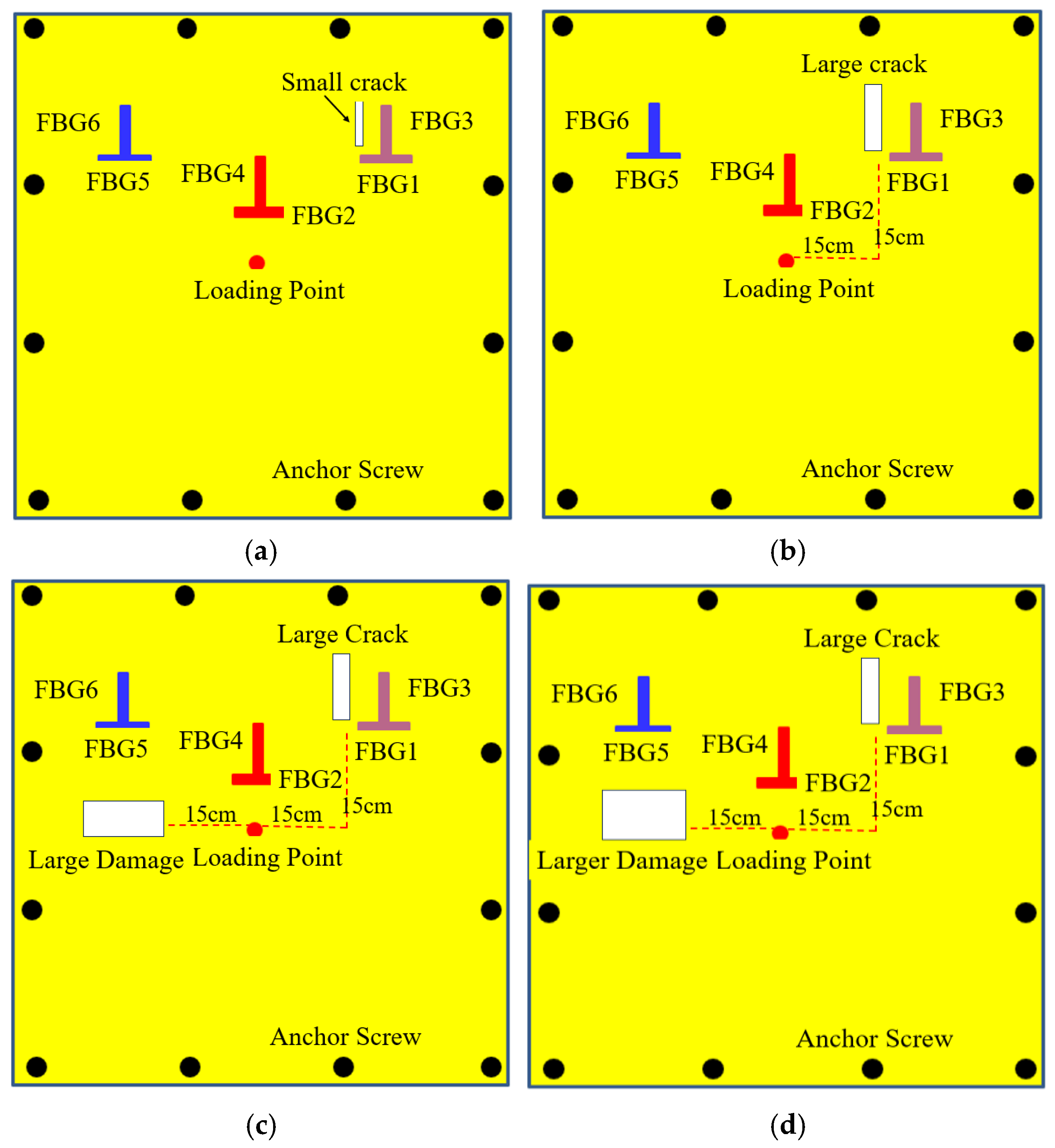
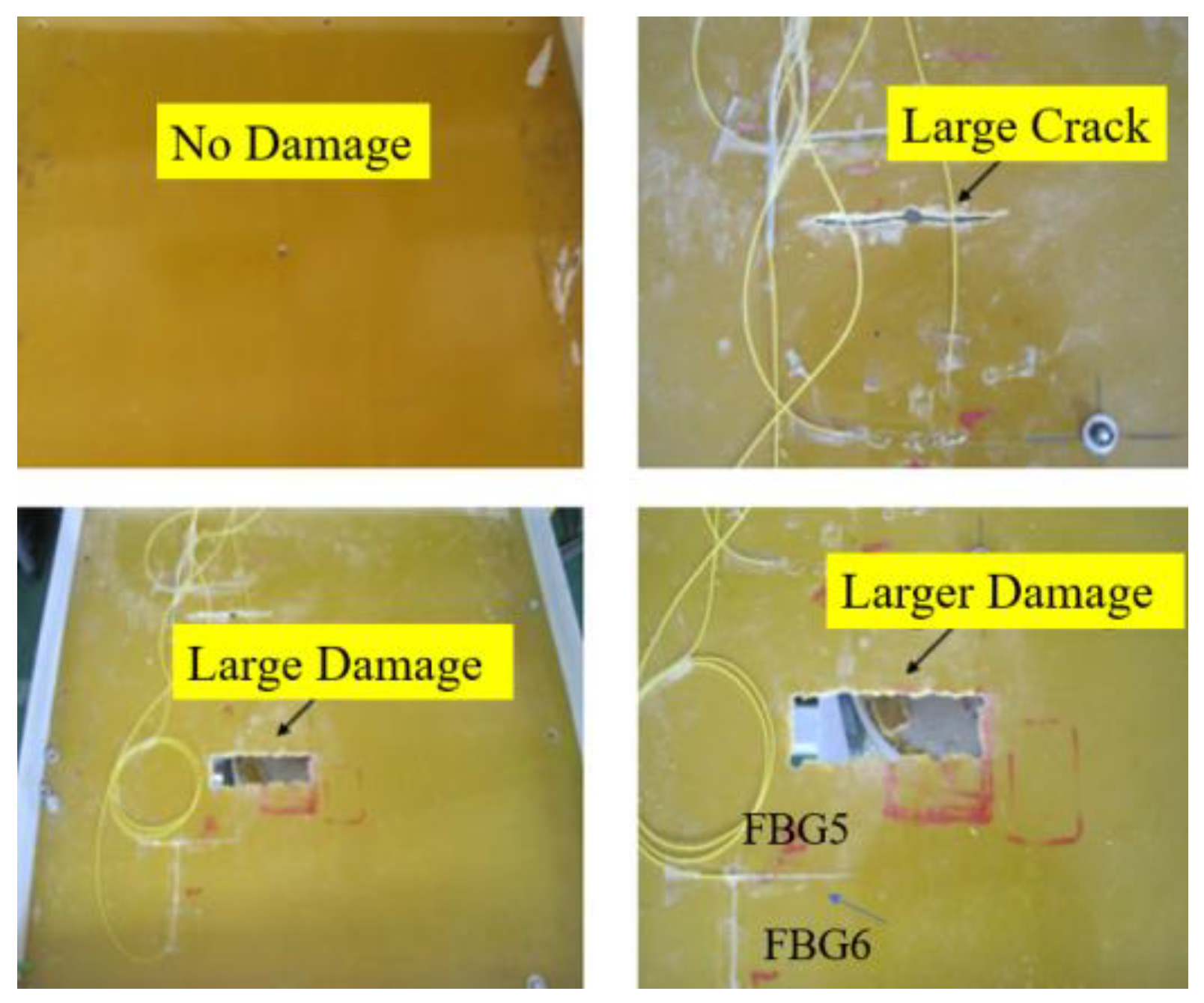



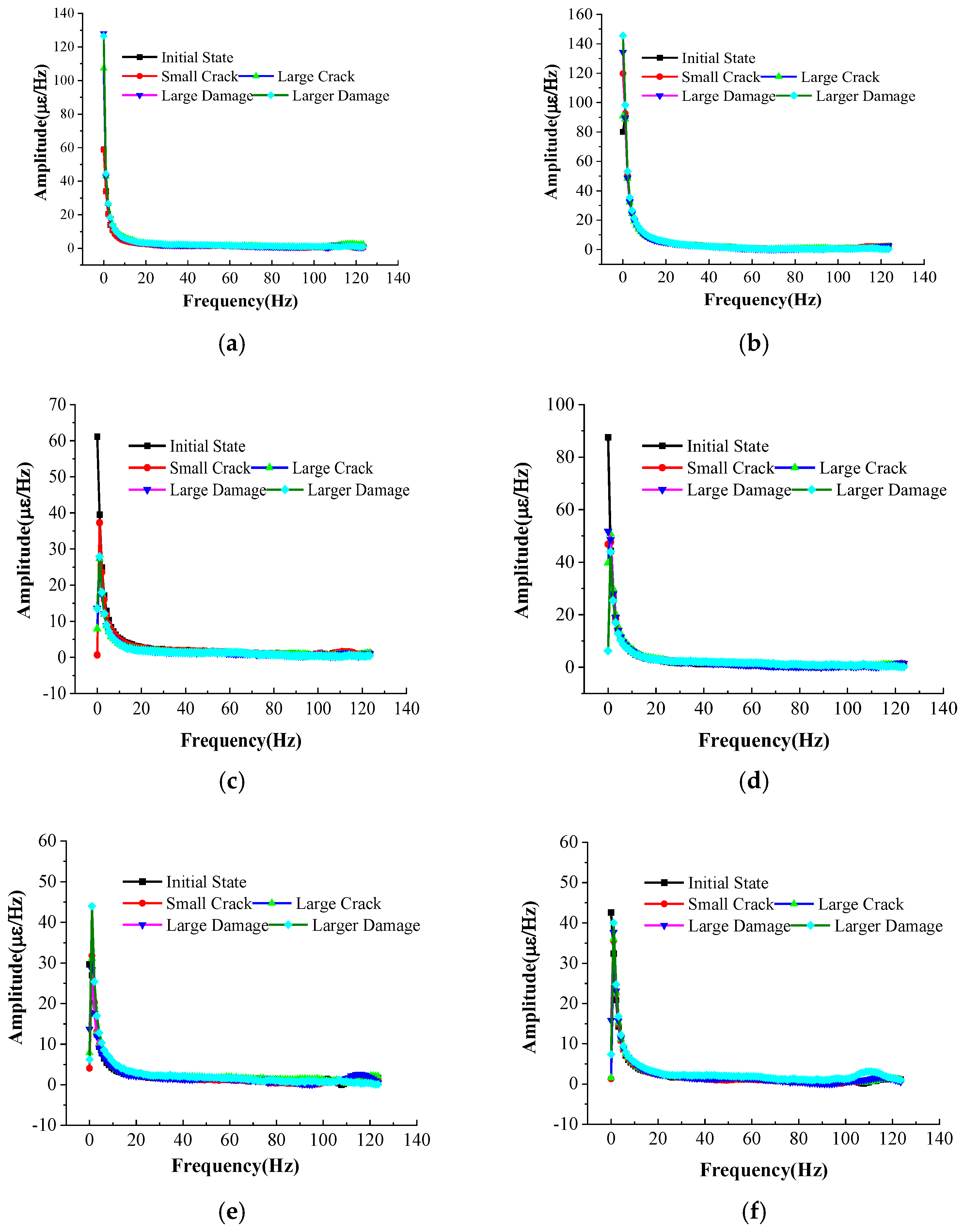

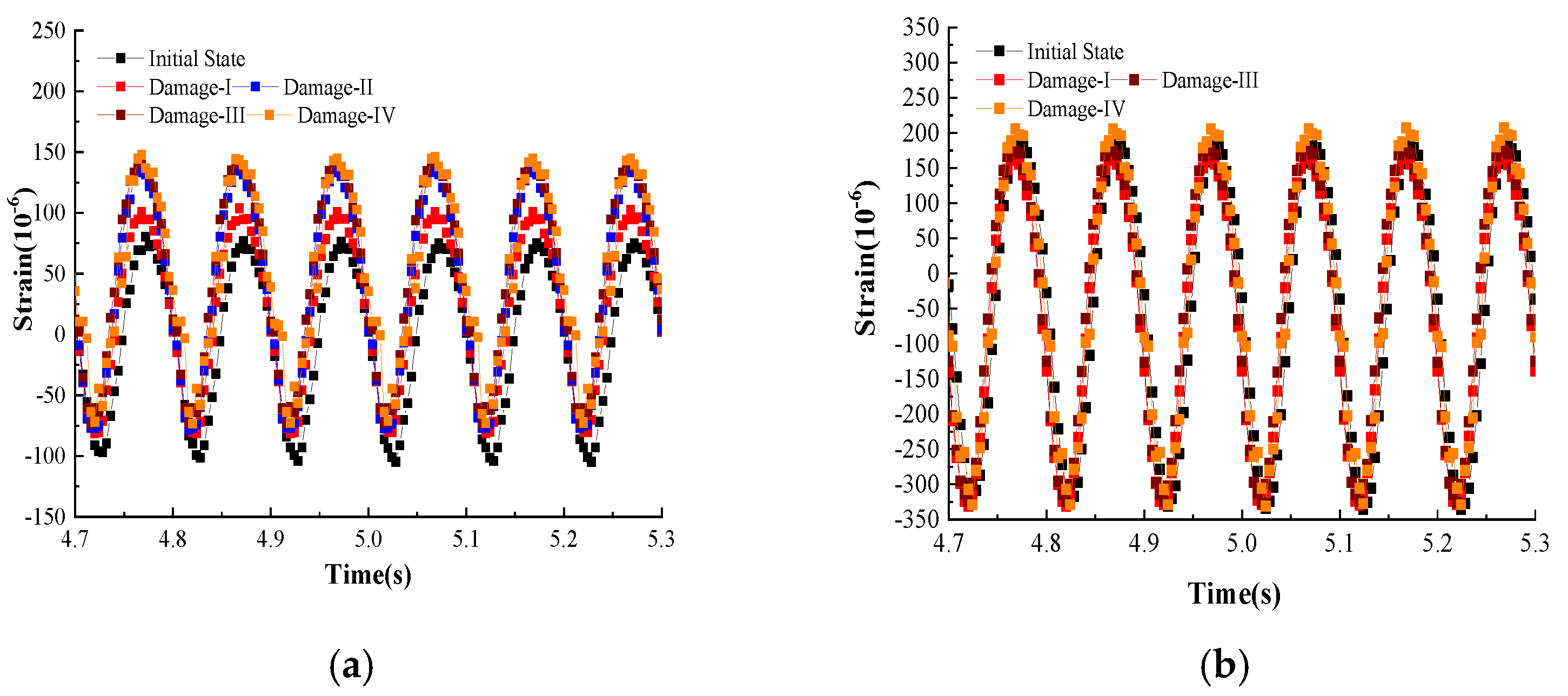
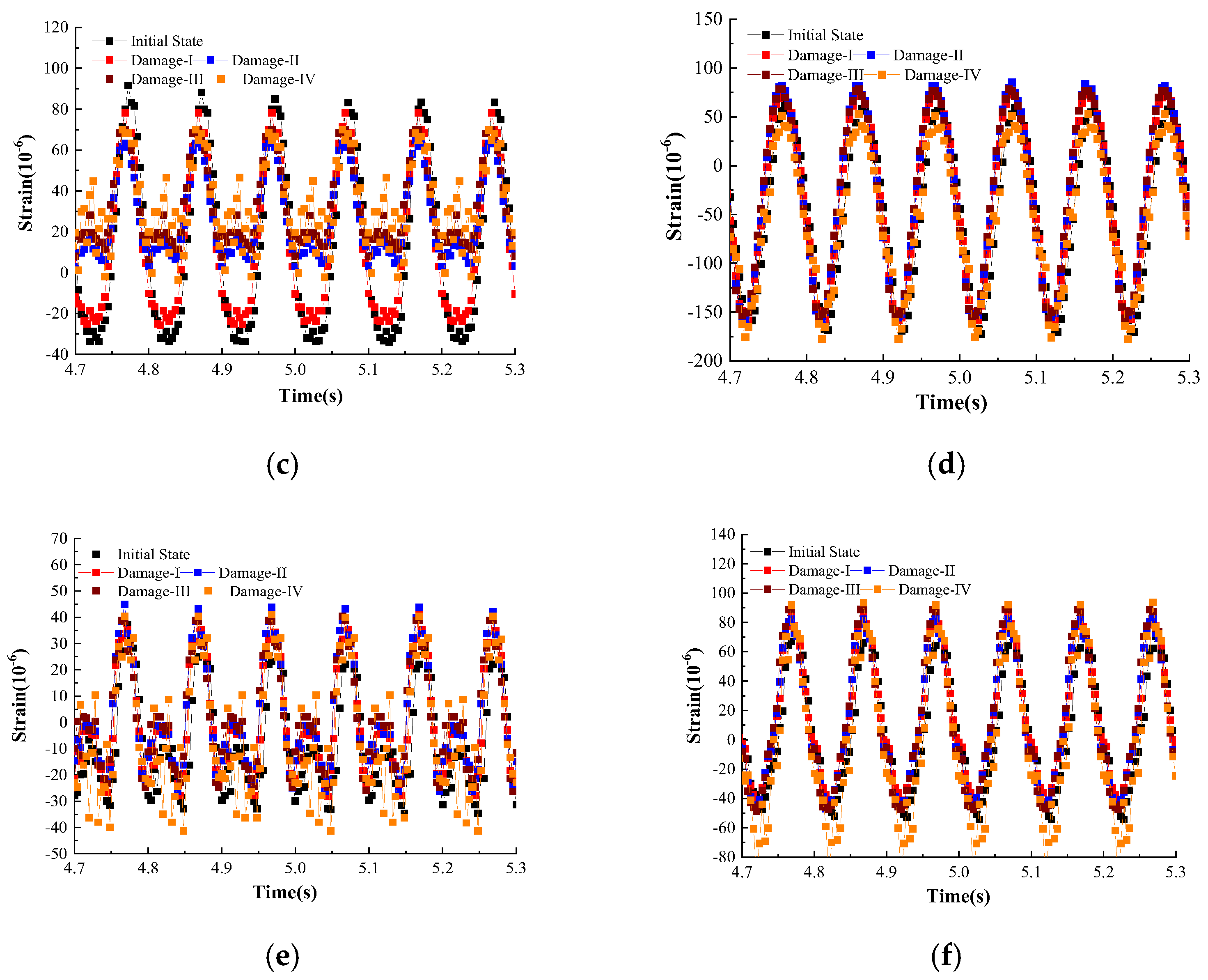
| FBG1 | FBG2 | FBG3 | FBG4 | FBG5 | FBG6 |
|---|---|---|---|---|---|
| 1532.1700 | 1546.6410 | 1550.2640 | 1560.4582 | 1541.3462 | 1535.4489 |
Disclaimer/Publisher’s Note: The statements, opinions and data contained in all publications are solely those of the individual author(s) and contributor(s) and not of MDPI and/or the editor(s). MDPI and/or the editor(s) disclaim responsibility for any injury to people or property resulting from any ideas, methods, instructions or products referred to in the content. |
© 2025 by the authors. Licensee MDPI, Basel, Switzerland. This article is an open access article distributed under the terms and conditions of the Creative Commons Attribution (CC BY) license (https://creativecommons.org/licenses/by/4.0/).
Share and Cite
Zhang, Z.; Qin, T.; Bao, Y.; Liu, R.; He, J. Experimental Study on Damage Monitoring of FRP Plate Using FBG Sensors. Micromachines 2025, 16, 649. https://doi.org/10.3390/mi16060649
Zhang Z, Qin T, Bao Y, Liu R, He J. Experimental Study on Damage Monitoring of FRP Plate Using FBG Sensors. Micromachines. 2025; 16(6):649. https://doi.org/10.3390/mi16060649
Chicago/Turabian StyleZhang, Zhe, Tongchun Qin, Yuping Bao, Ronggui Liu, and Jianping He. 2025. "Experimental Study on Damage Monitoring of FRP Plate Using FBG Sensors" Micromachines 16, no. 6: 649. https://doi.org/10.3390/mi16060649
APA StyleZhang, Z., Qin, T., Bao, Y., Liu, R., & He, J. (2025). Experimental Study on Damage Monitoring of FRP Plate Using FBG Sensors. Micromachines, 16(6), 649. https://doi.org/10.3390/mi16060649







